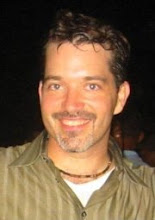El Yuma will be silent for the next week or so as I am currently leading a group of 28 students down "Lusiana" way spending our spring break doing some good old fashioned trabajo voluntario in and around N'walins (trans. New Orleans, Louisiana).
We call it service learning and in our case it realy is voluntary!
As readers of El Yuma will remember, this semester I am teaching a course that compares the histories and musical cultures of New York, New Orleans, and Havana. This student trip to New Orleans is an outgrowth of that course. You can see my previous post for more info in the course (and esp. on the books by my co-teacher, ethnomusicologist Ned Sublette). And while Ned is the guru of tracing the historical and musical connections between New Orleans and Havana, I'm going to include a number of pictures below that I've taken in the past few days that show that these links are alive and well despite decades of mutual isolation.
Our trip began with a tour of the cultural geography of New Orleans (given by Tulane geographer Rich Campanella) and a second tour of the infamous levee system (led by Tulane geologist Steve Nelson).
This past weekend, we experienced "Super Sunday" (normally celebrated on St. Joseph's Day - two weeks ago), which features a number of African-American neighborhood parades known as "second-lines" organized by one of New Orleans' many Social Pleasure and Aid Clubs - in the tradition of African-American fraternal organizations. These second-lines also sometimes feature appearances by the Mardi Gras Indians. See Ned's books for info on these two African-American traditions, which bear a striking resemblance to the Congas that I participated in when I visited Santiago de Cuba back in 2003. Incidentally, the SP&A Club that sponsored this partucular second-line is called "Revolution."
On Sunday, we also visited the gravesite of the famed Voodoo Queen, Marie Laveau located just off North Rampart Street adjacent to the plaza alternately known as Louis Armstrong Park and "Congo Square" - likely the only place in the United States where slaves and free people of color were permitted to gather freely on Sundays and sing their songs, beat their drums, and dance their dances. Palo Monte anyone?
This week we began our trabajo voluntario in earnest - working on the home of a retired nurse's aid in the famed Tremé neighborhood - the oldest still existing African-American neighborhood in the U.S. and the subject of the upcoming HBO series of the same name which will debut on April 11. (Indeed, tomorrow we plan to catch the cast and crew of Tremé as they shoot a future episode on Frenchman Street in the Fauborg Marginy).
On Good Friday we will travel out to Barataria (from the Spanish word barato, meaning cheap) Nature Preserve to check on the aligators and cypress forests in the swamps and bayous, followed by a visit to Destrahan Plantation, the oldest and one of the largest former sugar plantations, located on north shore of the Mississippi just behind the looming mound of dirt locals call a levee.
Finally, before taking part in an Easter Sunday parade and wolfing down a steaming pile of crawfish, we will head out to Eunice, Lousisana, deep in Cajun country on Saturday for food and music - located far southeast of N'awlins in de bayou.
More on the trip in my next post...




















Wow , muy bueno lo que haces , te felicito
ReplyDeletesaludos cubanos , date una vuelta por mi bog